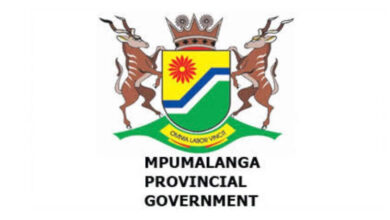10 Guidelines to help you pass your road test

1. Starting
If you don’t use the hand break properly and on sequence you will lose points.
The parking brake rachet, this is the clicking sound you hear when you pull the hand brake up without pushing in the button.
Make sure he hand brake is up
Check that the gear level is in the neutral position. Check that all warning lights on the dash board are not on by turning the ignition on, don’t start the car.
Turn the key further to start the car then give the accelerator a quick had push.
Check for warning signs in the dash board and also check that there is enough fuel in the tank.
Sit back and put on your seat belt.
2. Moving off
Do your 360 degree observation (This step is important before moving off)
Signal with your indicator to the left or right depending on the direction you will be taking
Put the vehicle into the right gear. A mistake in this section might cost you points.
Don’t wait too long when entering an intersection. Use safe opportunities to merge into traffic flow.
Set the vehicle smoothly into motion from the starting position and ensure that everything around you is safe and clear before you move off.
If the vehicle cuts out while you are trying to move off, pull up the hand break, put the gear into neutral and do the starting procedure again.
If you roll, this is an automatic failure. Without saying anything, the examiner will terminate the test and guide you back to the test center.
If you put the indicator on for any reason and forget to switch it off again, you will lose points.
3. Steering
If you do not use the push and pull method of turning the steering wheel you will lose points.
The 360 Degree observation while driving during the road test you must check the mirror every 5-8 seconds. You will lose points every time you forget to do so.
Don’t turn too wide. Doing any of the following will make you lose points:
Turning left and going over the middle of the road.
Turning right so widely that you almost bump the middle of the kerb on the far side
Cutting a corner
When turning left taking the corner too soon and almost bumping into the kerb
When turning right, cutting over towards the right-hand side of the road and possibly cutting over the centre white line.
If while driving on any road, the vehicle wanders all over the road and does not keep a straight line, you will lose points.
When positioning the vehicle on the road. You will lose points if you do not keep your vehicle in the safest possible position on the road. Keep the rules of the road and traffic signs.
You will lose two points if you do not keep in the lane you are supposed to be in and allow your vehicle to straddle the road markings.
4. Clutch
Smooth co-ordination of the clutch and gear.
If you do not depress the clutch pedal fully allowing only a portion of the engine’s power to be transmitted to the driving wheels, this could cause unnecessary wear to the clutch. If you use the clutch more than necessary you will lose points.
If you keep your foot on the clutch pedal while the vehicle is moving you will lose one point.
If you keep the clutch in too long while driving, or if you push the clutch in and coast along before braking to stop you will lose points.
5. Gear changing
If you select the wrong gear or drive too long in a lower gear with the engine labouring, or if you do not use a lower gear when driving down hill you will lose points.
When selecting the right gear, make sure that the vehicle is moving at a suitable speed. Ensure that the clutch is properly in before you change the gear. Let the gear slide smoothly and let it be coordinated with the clutch. Should you do any of these wrong, you will lose points.
Do not look down when changing the gear. You will lose many points.
Do not change the gear when turning on a corner. Always keep both hands on the steering wheel.
Do not put the gear into neutral while you stop.
6. Signals
Check the mirror before you check your blind spot and before you brake.
The blind spot. The right hand side must be checked before you indicate to turn left or right.
Always check your mirrors before you stop.
7. Lane changing
Check the mirror before changing lanes to see if there are any vehicles approaching.
Check your blind spot in case there is a car in the lane in which you are moving into.
Indicate to show other road users that you intend on changing lanes. Don’t forget to switch off your indicator again.
8. Overtaking
Check the mirror to see if there are any vehicles approaching from behind you.
Check your blind spot for hidden vehicles behind you.
Signal with your indicator to show other road users that you area out to overtake. Don’t forget to switch off your indicator.
Check for clear space around the vehicle you are trying to overtake in case you need to take evasive action.
Obey traffic rules, signs and road markings before you overtake. After overtaking do the complete sequence again and return to the right side of the road again.
9. Speed control
Check the mirror to see if there are any cars coming from behind before adjusting the speed.
If you drive too fast during the test you will lose points.
Driving too slow will cause you to become a hindrance on the road.
Avoid using jerky, uneven and sudden moves when accelerating you will lose points.
When releasing the acceleration pedal do so smoothly.
When slowing down for any reason do so smoothly and gradually.
Keep a safe following distance between you and the vehicle in front of you. Use the two second following distance.
10.Stopping
Check your mirror for cars coming behind you.
Check your blind spot if you are pulling into a parking bay or the side of the road.
Indicate to the direction towards which you will be turning.
Brake smoothly and gradually. Disengage your gears smoothly.
Make sure you maintain clear space around the vehicle so that you can manoeuvre out smoothly. Once you have stopped pull up your hand break using your thumb to press the button.
Put the gear into neutral. Once you have stopped don’t forget to switch your indicator off.
Never stop the vehicle without a reason.
Mbali Radebe





